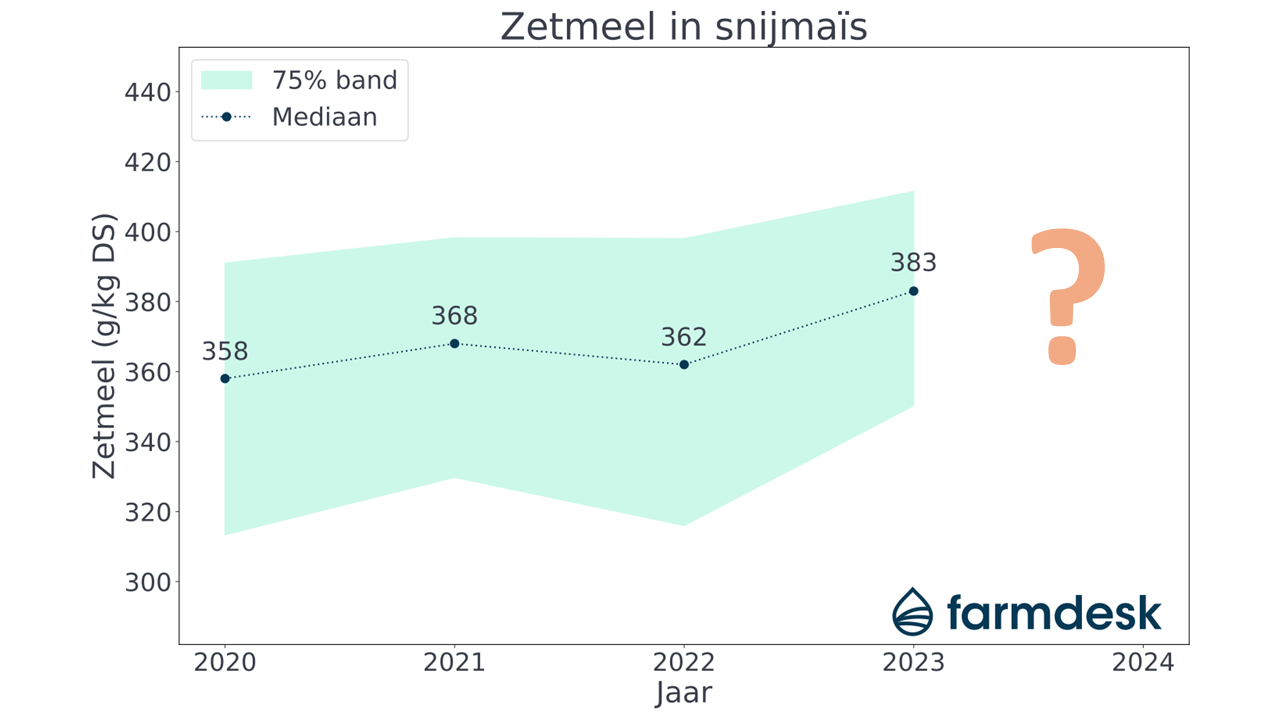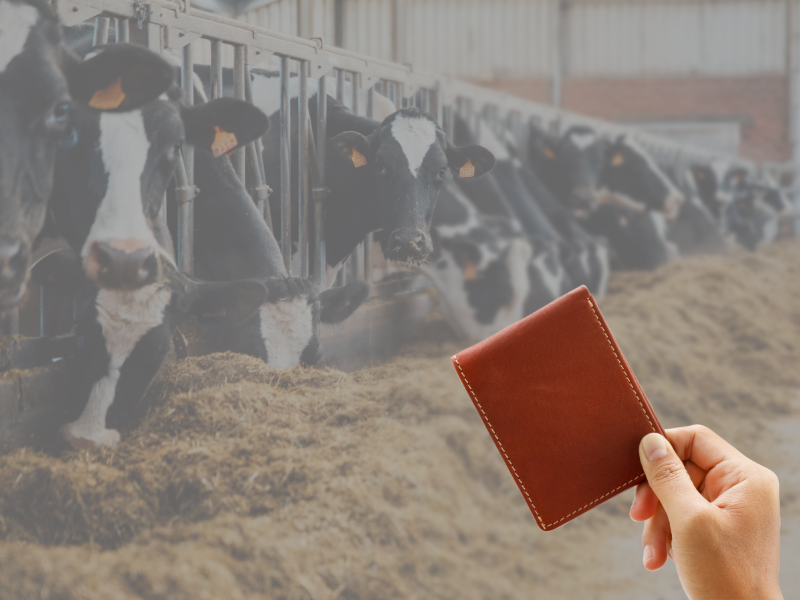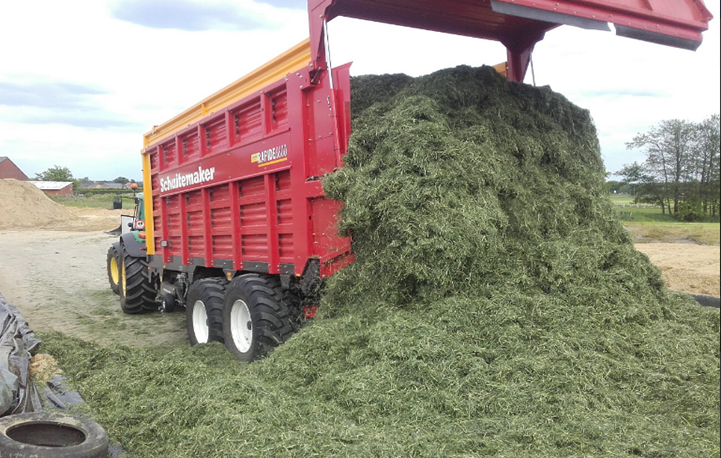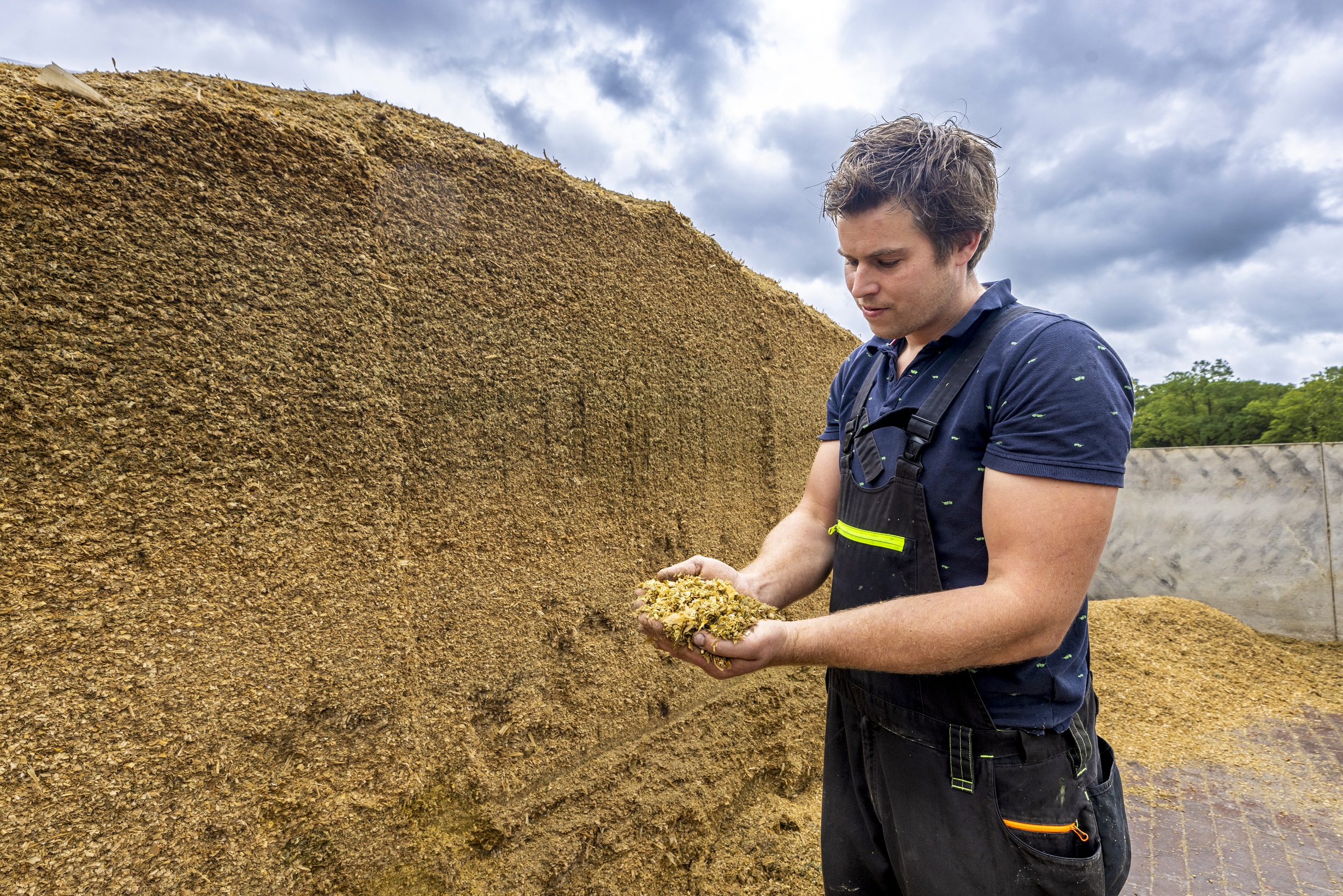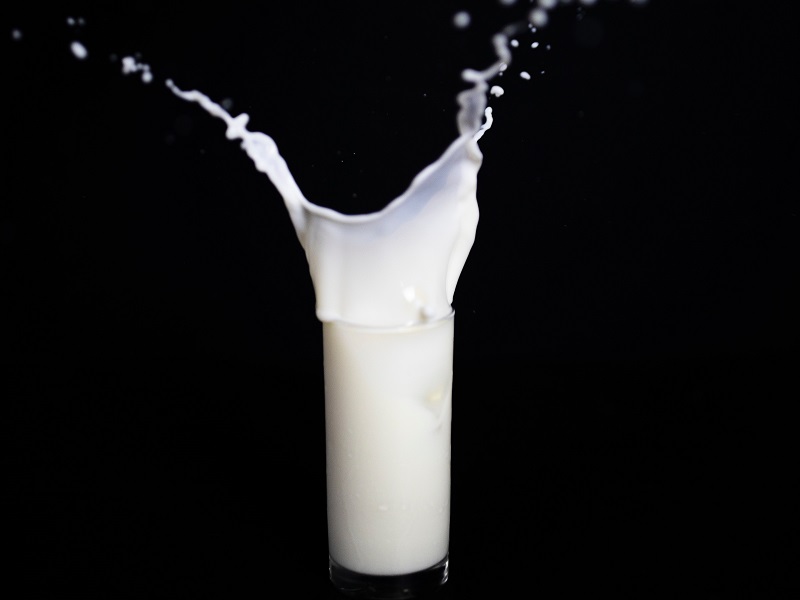The article below is based on forage maize analyses from Farmdesk users spread across the Netherlands and Belgium. We have 173 analyses available for 2023.
This article is a continuation of the article Markable forage maize after a hot and dry summer.
The 2023 maize season brought challenges, mainly due to a very wet and cool spring. This resulted in delays in seeding, with much corn not going into the ground until mid- or even late May. Fortunately, the growing weather during the summer and warm, dry conditions in September and early October brought relief. This allowed the corn to largely catch up and ripening progressed well. However, late plots experienced difficulties due to excessive rainfall in mid- and late October, making corn harvest challenging in some cases.
Overall, the quality of silage corn is high, with an average starch content of 384 grams per kilogram of dry matter. The VEM is also on the high side with an average of 992. Good news because this means more milk from your own forage!
In the remainder of this article, we will go deeper into the feed values dry matter content, starch and bypass starch, NDF, ADL and VEM. More explanation of these feed values can be found Feed values and key figures in Farmdesk and specifically for NDF and ADL here.
Dry matter content in silage corn
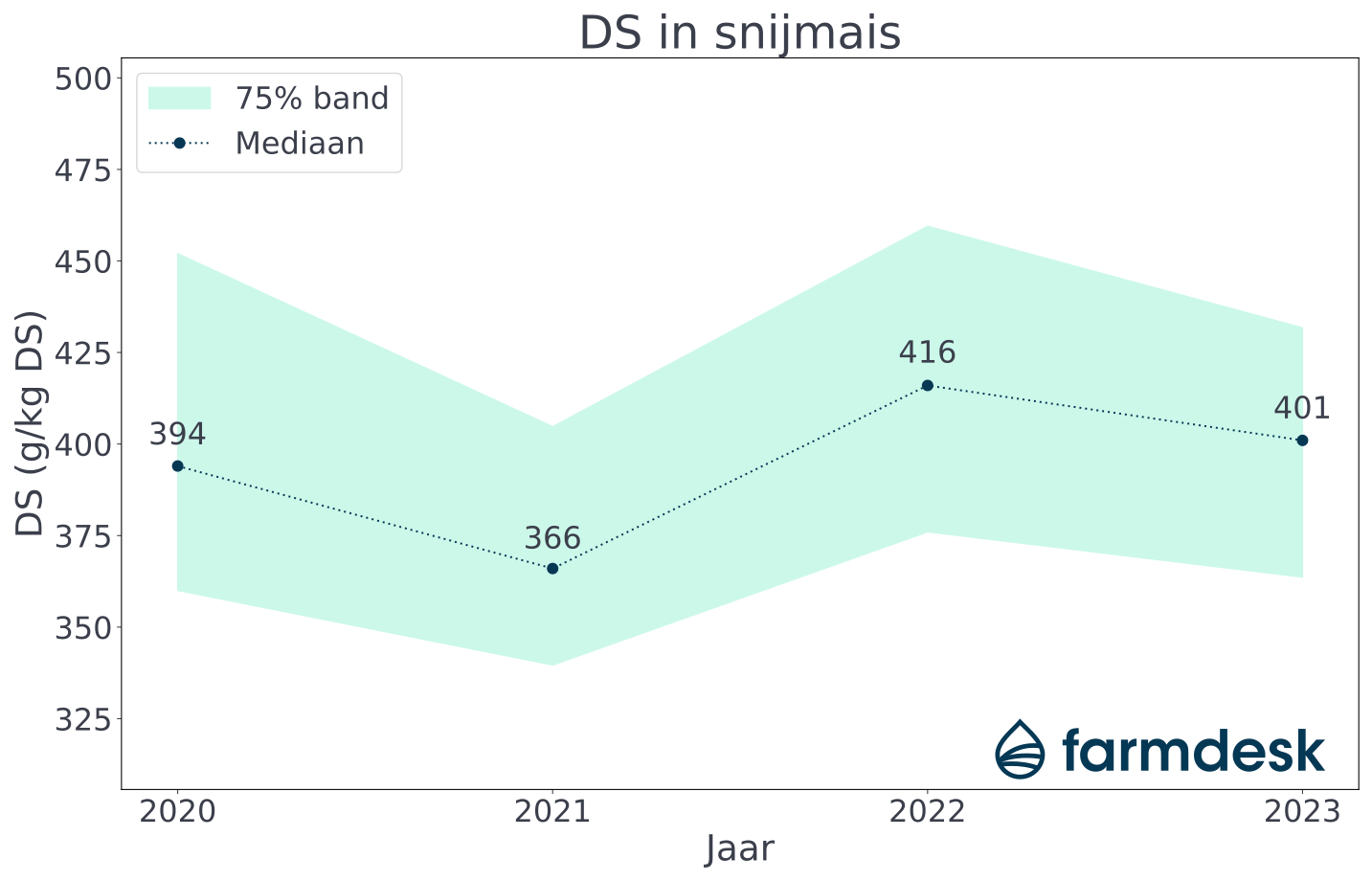
Also this year we are seeing relatively dry silage, although not as extreme as last year.
Because of the late sowing and therefore an extended harvest season, the first corn was already ripe for harvest while other plots were not. The variation in maturity resulted in a later harvest stage for some plots, which explains the high dry matter content. This year the average dry matter content at 40.1 % is slightly above the 4-year average of 39.4 %.
Starch content in silage corn
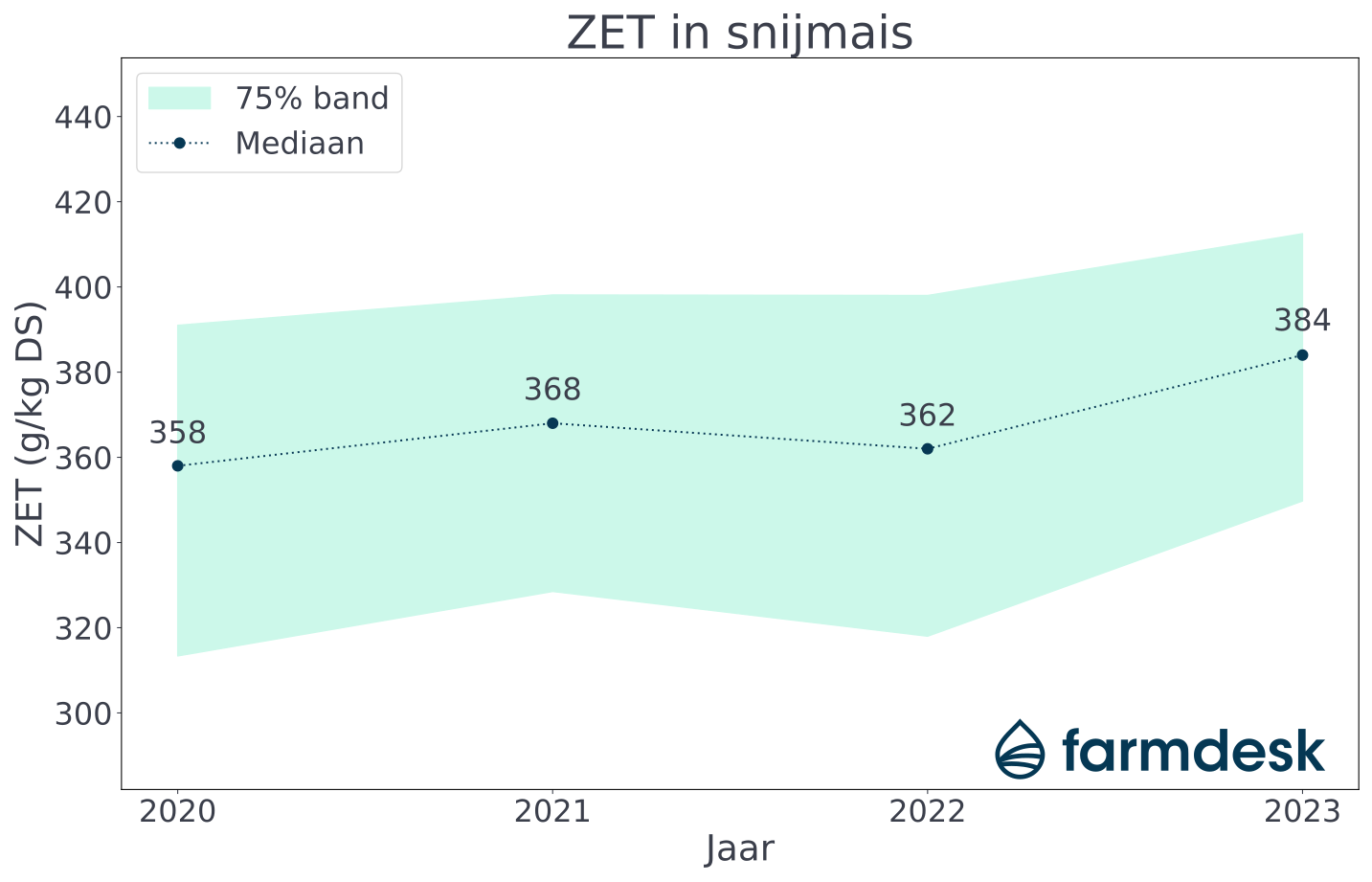
Favorable weather conditions have resulted in good cob filling and maturation, which is evident in the starch content of the silage corn. This is well above the 4-year average of 368, with an average of 384 grams per kg of dry matter.
Bypass starch content in silage corn
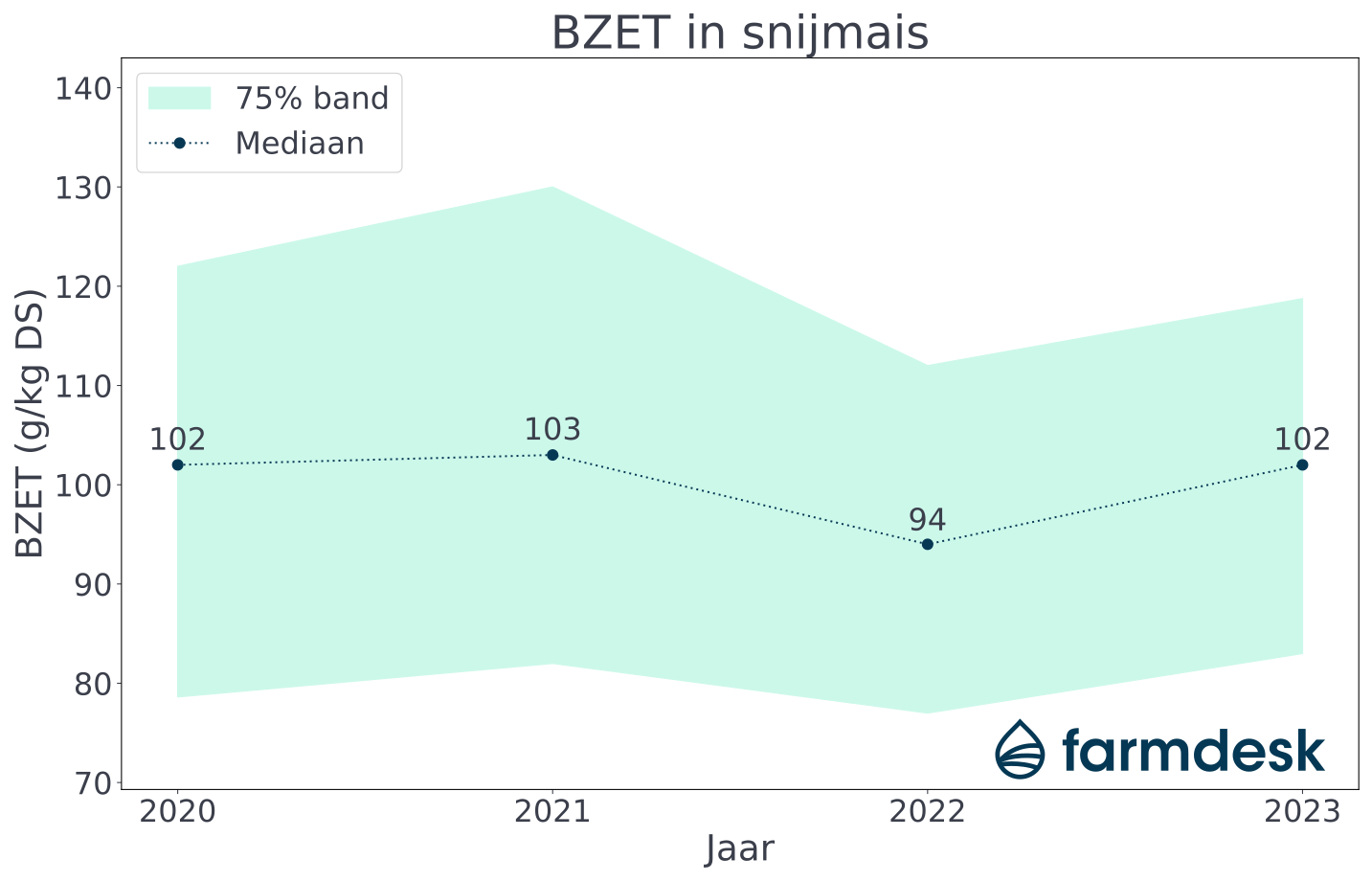
Bypass starch is also higher than last years with an average of 102 grams per kg dry matter. This is due to good cob maturation, which means the starch in the grain is better developed and therefore more resistant. Because the silage corn remained green longer last year due to the mild weather, good grain filling was possible until harvest time.
NDF and ADL in silage corn
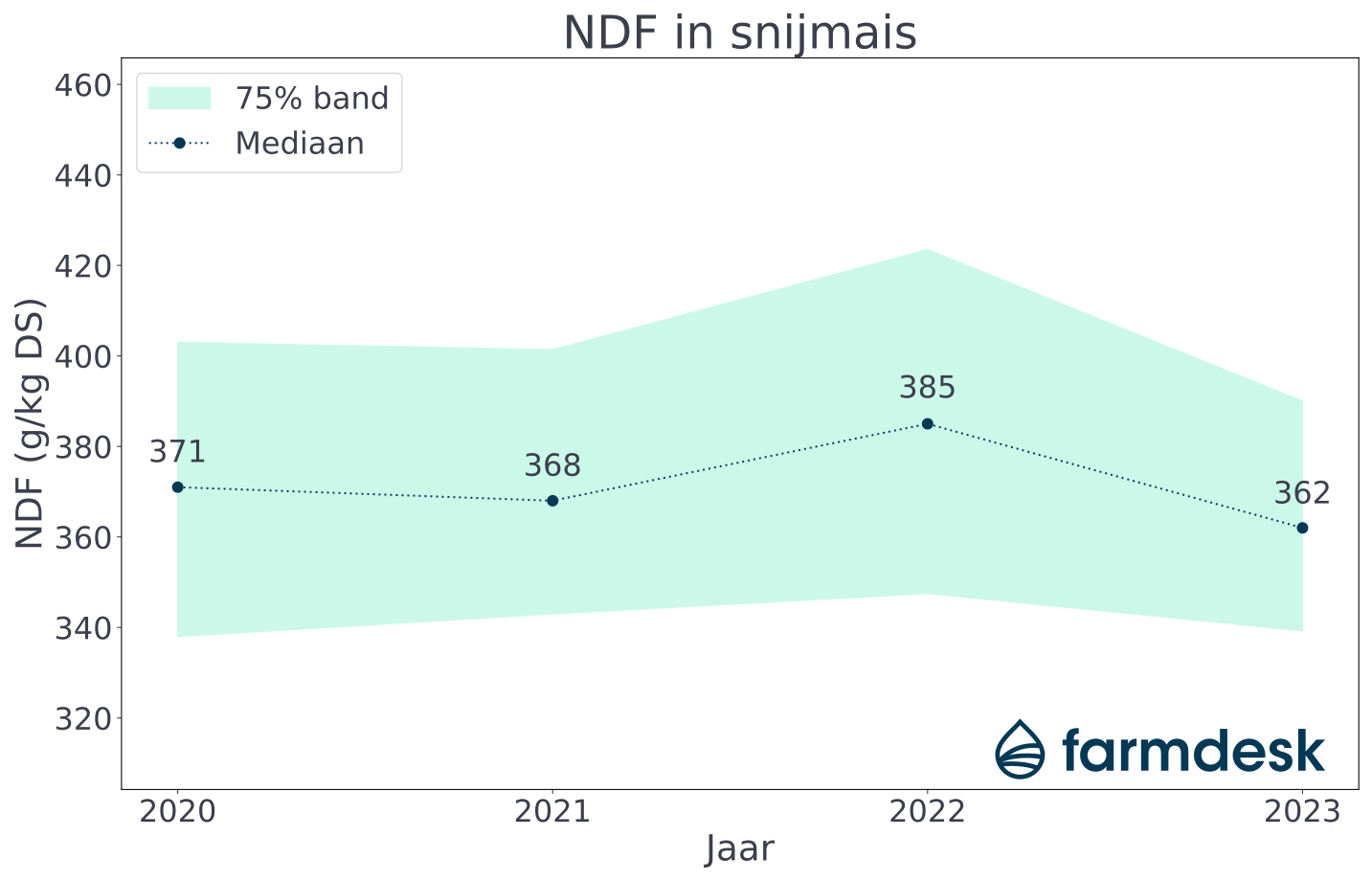

The NDF and ADL levels are relatively low this year, indicating fewer structural carbohydrates that are relatively easy to digest.
These low levels are due to a tender growing season, which has also manifested itself in a high starch content.
VEM in silage corn
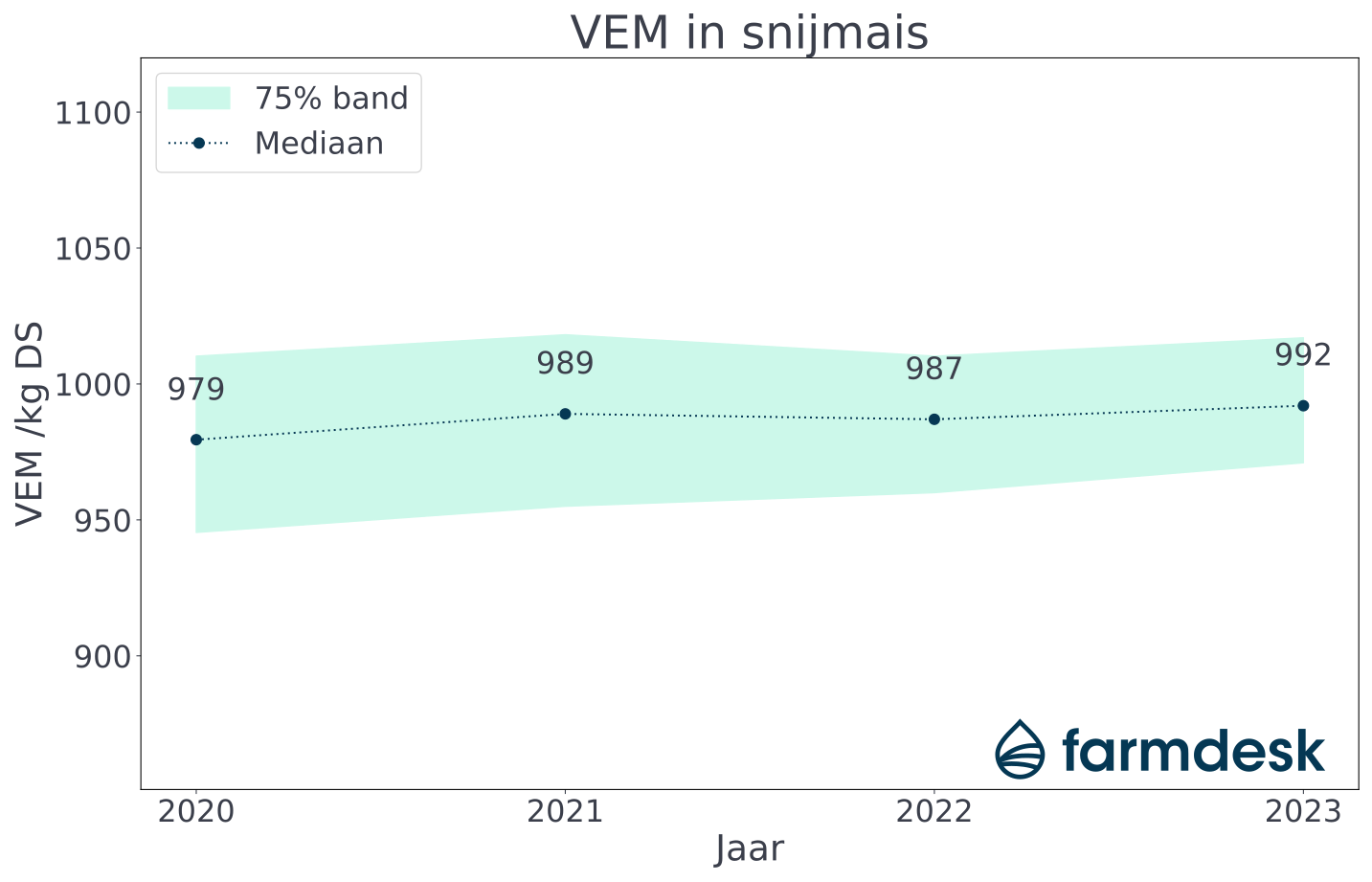
The VEM averaging 992 is slightly higher than the 4-year average of 987. This indicates a better forage value of the silage corn compared to previous years, which is beneficial for the nutritional needs of the cattle.
"In short, this year's 2023 cut corn promises to be a valuable and nutritious forage for cattle."
Daya Will



